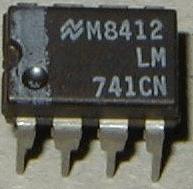2x25 Watt LM1875 Gainclone Amplifier
2x50W LM3875 Gainclone Amplifier
2x56W LM3876 Gainclone Amplifier
2x68W LM3886 Gainclone Amplifier
2x50W Tube Gainclone Hybrid Amplifier
D.I.Y, Free Electronic Circuits, Hobby Circuits, Audio-video circuits, Radio circuits, Power supply, Digital Circuits, Embedded Circuits, Amplifiers, Power Amplifier, Data Sheet, Service Manual, Free Download.


2x25 Watt LM1875 Gainclone Amplifier
Posted by abe 0 comments
Labels: Gainclones, Power Amplifier | View blog reactions
|
Bookmark this post:
|
|
The chip on which the amplifier is based, a Type LM3876, is a member of the Overture family from National Semiconductor, All members of this family are pin-compatible and mutually interchangeable. They are typified by an internal protection (called SPIKE). In practice, the diftection ference between them is the power output. The series was described on the basis of the LM3886 in an earlier issue*.
The PCB has been designed so what it can accommodate the LM3876 (50W) as well as the LM3886 (150W). Because of this, pin5 of the IC on the board is connected to the positive supply line. This connection is not needed for the LM3876, since its pin5 is not (internally) connected (NC).
The IC is located at the side of the board to facilitate fitting it to a heat sink as shown in the photograph.
An important aspect for optimum performance is the decoupling of the unregulated supply lines by C 7-10. All earth connections go to a single terminal on the board.
Air-cored inductor L1 consists of 13 turns of 1mm dia. enamelled copper wire with an inner diameter of 10mm. The completed inductor is pushed over R7 and its terminals soldered to those of the resistor.
All electrolytic capacitors must be mounted upright. The amplifier can be muted with a single-pole switch connected to the MUTE input (pin8). This function is enabled when the switch is open. If muting is not required, solder a wire bridge across the mute terminals on the board.
Boucherot network R6-C6 is not normally required in this application, but provision has been made for it for use in other applications.
According to the manufacturers, both chips are optimalized for a load of 8 Ohm. The output power is lower when a 4 Ohm load is used or when the supply voltage is reduced. When a 4 Ohm load is used, the SPIKE protection becomes active when the supply voltage is about 27V, resulting a in a reduction of the power output to 10W. This means that it is not advisable to use loudspeaker with an impedance < 8 Ohm.
For best result you can expand power amplifier using BPA-200 Amplifier
This is design is very similar to the National Semiconductor BPA-200 (Bridge/Parallel Amplifier) which uses 4x LM3886 per channel and an input buffer:
These are perfect speaker cables for my brother speaker. I build use AMP Cat6 cables, for detail view here.
Posted by abe 0 comments
Labels: DIY Speaker Cables, Speaker Cables | View blog reactions
|
Bookmark this post:
|
|
I have been build this speaker for my brother, these are do-it-yourself (DIY) speakers that and using granite for the speaker box. I listen this speaker, That's Great Perfect Sound, nearly linear reproduction sound. Great Job Man!. Source Perfect Sound Granite DIY Speaker Project.
Posted by abe 0 comments
Labels: Build Speaker, DIY Speakers | View blog reactions
|
Bookmark this post:
|
|
The creator of THIS PAGE or the ISP(s) hosting any content on this site take NO responsibility for the way you use the information provided on this site. These circuits here are for educational purposes only and SHOULD BE VIEWED ONLY. If you download any files to view them, you are agreeing to delete them within a 24 hour period. If you are affiliated with any government, or ANTI-Piracy group or any other related group or were formally a worker of one you CANNOT enter this web site, cannot access any of its files and you cannot view any of the HTML files. All the objects on this site are PRIVATE property and are meant for previewing only. If you enter this site without following these agreements you are not agreeing to these terms and you are violating code 431.322.12 of the Internet Privacy Act signed by Bill Clinton in 1995 and that means that you CANNOT threaten our ISP(s) or any person(s) or company storing these files, cannot prosecute any person(s) affiliated with this page which includes family, friends or individuals who run or enter this web site. IF YOU DO NOT AGREE TO THESE TERMS THEN LEAVE.
All files are found using legitimate search engine techniques. This site does not and will not condone hacking into sites to create the links it list. We will and do assume that all links found on the search engines we use are obtained in a legal manner and the webmasters are aware of the links listed on the search engines. If you find a URL that belongs to you, and you did not realize that it was "open to the public", please use the report button to notify the blogmaster of your request to remove it. This is not an invitation for webblog haters to spam with requests to remove content they feel that is objectionable and or unacceptable. Proof of URL ownership is required.
NOTICE: This Blog Has Already Been Reviewed And Accepted By Blogger.com



My blog is worth $564.54.
How much is your blog worth?


 I love using "Real Link Finder"! It lets me find on-topic blogs where I can leave my own comments and a "Real" link back to my website! Get your own copy of this free blog commenting software by clicking here!
I love using "Real Link Finder"! It lets me find on-topic blogs where I can leave my own comments and a "Real" link back to my website! Get your own copy of this free blog commenting software by clicking here!